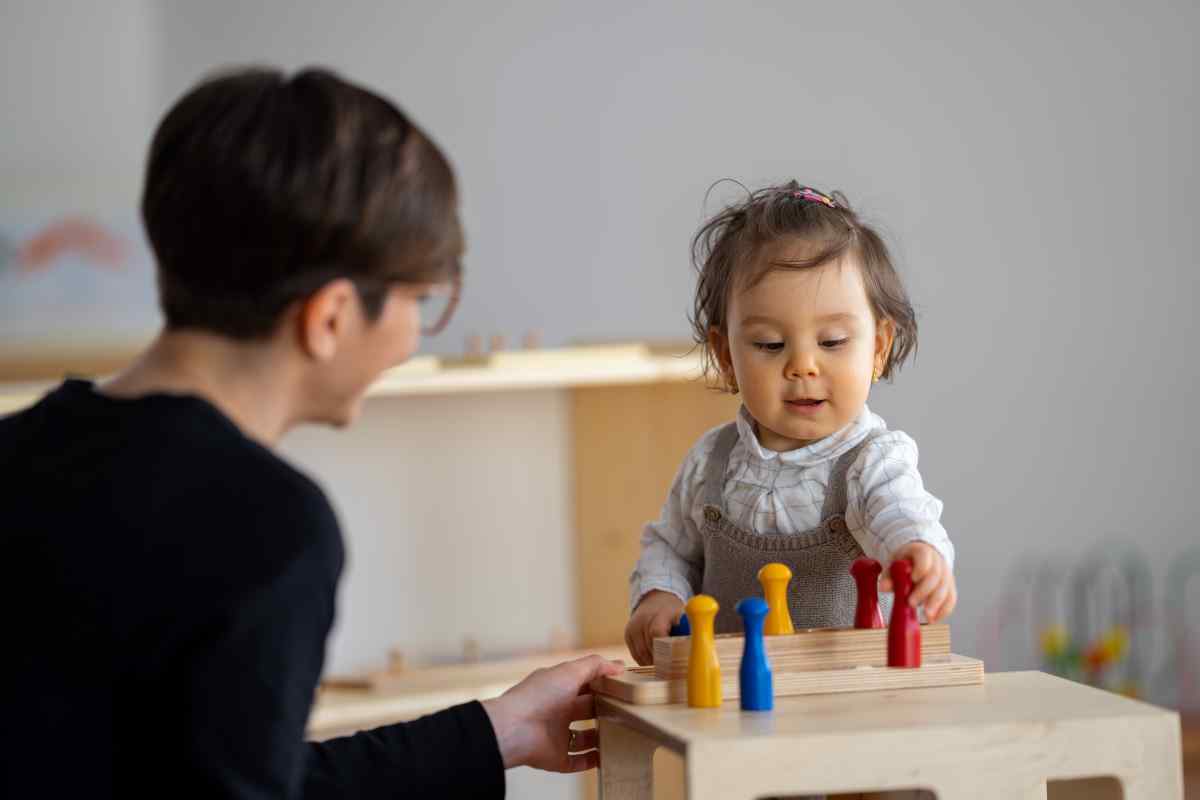Montessori education
Montessori vs Waldorf Education: Which Is Right for Your Child?
Selecting the right educational approach for your child is one of the most important decisions a parent can make. Two popular alternative schooling philosophies are Montessori and Waldorf education. Both have unique principles and teaching methods aimed at nurturing children’s natural curiosities and talents.
This article provides an in-depth comparison of Montessori and Waldorf to help parents determine which option may be the best fit for their child’s needs and learning style.
Table of Contents
Introduction to Montessori and Waldorf Education
The Montessori method was developed in the early 1900s by Dr. Maria Montessori, one of the first female physicians in Italy. Montessori schools embrace self-directed learning, hands-on lessons with sensory materials, student choice of activities, and mixed age classrooms.
Waldorf education was founded in 1919 by Rudolf Steiner and focuses on educating the “head, heart, and hands.” Waldorf schools emphasize imagination, creativity, attention to nature and rhythms, delayed academics, and integrated arts and activities.
Both alternative approaches encourage:
- Individualized learning
- Creativity and imagination
- Hands-on lessons
- Holistic child development
Choosing an educational philosophy aligned with your child’s learning needs and interests is key to their future success and well-being.
Core Principles of Montessori Education
The key principles of Montessori education include:
- Student-led learning: Children choose activities that interest them and work at their own pace. Classrooms have open layouts with different activity centers.
- Self-correction and discovery: Children receive limited direct instruction. Teachers act as guides, allowing students to learn through trial and error using self-correcting materials.
- Sensory-rich environments: Classrooms have hands-on Montessori materials that stimulate all senses: tactile, auditory, visual, etc. Activities build real-life skills.
- Mixed age classrooms: Students across 3 years work together, allowing older children to teach younger ones. Younger kids aspire to do what the big kids can.
- Cultivation of independence: Everything from classroom setup to lessons fosters independence and self-sufficiency in students. Goal is to help children become motivated learners.
Montessori classrooms often appear chaotic to outsiders. But underneath, there is an orderly method guiding student exploration and skill-building.

The Montessori Curriculum Approach
The Montessori curriculum is organized into five main areas:
- Practical life skills – Activities like sewing, cleaning, cooking, etc.
- Sensorial – Materials and exercises to refine senses.
- Mathematics – Concrete math materials like beads and number rods.
- Language – Reading, writing, grammar, vocabulary, and oral expression.
- Cultural studies – Geography, history, biology, arts, music, etc.
Subjects are interwoven, allowing children to pursue their interests. There are no grades or tests. Students progress at their own pace, guided by teachers and an innate drive to learn.
Montessori classrooms allow children to touch, manipulate, and explore educational materials. This tactile approach is ideal for hands-on learners.
Pros and Cons of Montessori Schools
Pros of Montessori Education:
- Fosters independence and self-discipline
- Student-directed learning caters to different paces
- Multi-age classrooms encourage peer learning
- Emphasis on concrete learning materials
- Cultivates creativity and problem-solving
Potential Cons:
- Less structure and teacher direction
- Can be too unstructured for some children
- Requires high level of parent engagement
- Access to materials can be distracting
- Transition to traditional schooling can be difficult
Montessori is a top choice for independent, self-motivated kids who thrive on exploration. But it may not offer enough support for children who require more guidance.
Core Principles of Waldorf Education
Some key principles of Waldorf education include:
- Holistic development: Integrates the arts, music, movement, nature. Focuses on nourishing the heart, head, and hands.
- Rhythm and ritual: Classrooms and lessons have rhythmic structures tied to seasons and nature. Familiar rituals provide comfort.
- Imagination and creativity: Storytelling, myths, legends, arts, handicrafts, and pretend play spur imaginative thinking.
- Delayed academics: No academics until age 7. Early years spent developing foundational capacities through play.
- Continuity of teachers: Same teacher stays with class for up to 8 years to build close bonds.
Waldorf aims to educate the whole child. Academic rigor is balanced with equal emphasis on fostering wonder, creativity, and practical skills.

The Waldorf Curriculum Approach
The Waldorf curriculum adheres to child development stages:
Early childhood (0-7 years) focuses on play, imitation, storytelling, arts, music, and motor skills to build capacities for later learning.
Elementary (7-14 years) introduces academic topics throuh legends, myths, and experiential learning. Subjects are integrated to engage different ways of thinking.
High school (14-18 years) focuses on critical thinking and conceptual understanding. Advanced math, history, sciences, languages, and arts are taught.
Compared to Montessori, academics are formally introduced later. But the arts are central starting early on. Waldorf advocates claim this helps build creative problem-solving abilities.
Pros and Cons of Waldorf Education
Pros of Waldorf Education:
- Nurtures creativity, imagination, and hands-on skills
- Holistic integration of arts, music, and nature
- Delayed academics allows extended play-based learning
- Strong sense of community and collaboration
- Cultivates social-emotional capacities
Potential Cons:
- Less emphasis on early academic rigor
- Overly protective environment
- Limited technology and media exposure
- Misses some key science and social studies
- Unconventional teaching methods
For art or music-loving kids, the Waldorf approach can be highly engaging. But some parents feel it does not prepare children for academic or real world demands.
Choosing between Montessori and Waldorf requires understanding your child’s needs, interests, and the priorities you have for their education.
Montessori vs. Waldorf: Key Differences
| Montessori | Waldorf | |
|---|---|---|
| Philosophy | Student-directed, hands-on learning through discovery | Nourishing heart, head, and hands through arts, imagination, and nature |
| Curriculum | Practical skills, sensory learning, early reading/math | Play-based early years, integrated arts, delayed academics |
| Teaching Methods | Student choice, limited instruction, multi-age classrooms | Artistic activities, storytelling, continuity of teachers |
| Learning Materials | Varied manipulatives, sensory objects | Natural materials, crafts, art supplies |
| Technology Views | Embraced as a learning tool | Discouraged, very limited use |
| Testing and Grades | None | Generally minimized |
While both are child-centered, Montessori focuses more explicitly on fostering independence and early cognitive skills, while Waldorf emphasizes nurturing wonder, creativity, and practical arts abilities.
Factors to Consider When Choosing
Consider the following when deciding between Montessori and Waldorf:
- Your child’s interests, temperament and learning style
- Desired focus: academic rigor or creative expression
- Ideal environment: structured or free exploration
- Comfort with alternative teaching techniques
- Access to technology and media
- Exposure to arts, music, and nature
- Importance of early reading and math skills
- Social-emotional needs: collaboration or independence
Schedule school visits to get firsthand experience. Observe classrooms and speak with teachers to determine which resonates most with your child’s needs.

Experiences from Montessori Parents
“Montessori has given my daughter independence and confidence. She loves having the freedom to pursue her interests. Her self-discipline has grown tremendously.” – Sara, parent of a 6 year old
“The hands-on materials were perfect for my tactile son who got bored just listening. Allowing him to move at his own pace made all the difference.” – James, parent of an 8 year old
“Seeing my shy daughter flourish socially with children of different ages was really impactful. The mixed age classrooms are a huge benefit.” – Emily, parent of a 5 year old
Experiences from Waldorf Parents
“My son comes home vibrating with creativity! The hands-on activities bring so much joy and help him focus.” – Robin, parent of a 7 year old
“I underestimated the power of play. Giving my daughter those carefree early years fostered a passion for learning.” – Richard, parent of a 9 year old
“The art, music, and storytelling create a magical world. My kids are so motivated and inspired to learn.” – Maya, parent of a 6 and 8 year old
Parent testimonials reveal how both approaches can profoundly shape children’s learning capacities and attitudes when well-aligned with their needs.
Making an Informed Montessori or Waldorf Decision
- Reflect on your priorities regarding social interaction, creativity, academics, exploration, arts, and life skills
- Schedule school visits and observe classrooms in action
- Have your child participate in a trial day at each school
- Speak with teachers about your child’s learning profile and needs
- Connect with parents to learn about their experiences
- Research the teaching credentials and training of the schools
- Consider any logistical factors like location, hours, and budgets
Take time to immerse yourself in both options. An informed decision will pay dividends in your child’s development.
Montessori vs. Waldorf Debate
There is an ongoing debate around the merits of Montessori and Waldorf education:
Montessori Pros
- Earlier focus on reading and math
- Proven benefits to executive function
- Fosters independence and self-direction
- Smooth transition to traditional schooling
Montessori Cons
- Light on creative arts and imagination
- Less collaborative than Waldorf
- Can lack needed structure
- Weak social-emotional development
Waldorf Pros
- Nurtures creativity and wonder
- Integrates arts, music and nature
- Play-based approach mirrors child development stages
- Cultivates practical life skills
Waldorf Cons
- Delayed teaching of reading and math
- Overemphasis on play vs. academics
- Unrealistic protection from society
- Misses opportunities in science and social studies
While both approaches have advantages, choosing the right education depends on aligning with the child’s learning style and needs.
Inspiring Alumni of Montessori and Waldorf Schools
Notable Montessori alumni:
- Jeff Bezos, Amazon founder
- Jimmy Wales, Wikipedia co-founder
- Julia Child, chef and TV personality
- Katharine Graham, publisher of The Washington Post
- Anne Frank, diarist and Holocaust victim
Notable Waldorf alumni:
- Jennifer Aniston, actress
- Alicia Keys, musician and activist
- Andrew Weil, holistic health expert
- Tobias Wolff, author
- Albert Hammond Jr., musician
The creativity, curiosity, and leadership fostered in both environments has led to fulfilled lives and world-changing achievements.
Conclusion: Choosing What’s Right for Your Child’s Needs
When it comes to Montessori and Waldorf education, there is no universally superior option. The “best” choice depends entirely on your child’s learning requirements and your family’s educational priorities.
Take time to research both philosophies. Observe how the methods translate to actual classroom experiences. Reflect on your child’s needs and passions to determine the optimal match.
With open communication and proper alignment, Montessori and Waldorf schools can equip children with the tools needed to thrive. But the key is finding the approach that provides the right environment for your unique child to flourish.

FAQs
What are the key differences between Montessori and Waldorf education?
The Montessori method focuses on fostering independence, self-directed learning, early reading and math skills. Waldorf emphasizes nurturing creativity, imagination, arts, and delaying formal academics. Montessori uses sensory-rich manipulatives while Waldorf favors natural materials and crafts.
Which teaching method is more suitable for my child’s learning style?
Montessori suits tactile, independent learners who thrive through self-discovery. Waldorf appeals to imaginative, artistic children who learn well through creative expression. Observe your child’s interests and strengths to determine the best fit.
Do Montessori and Waldorf schools have similar philosophies?
Both are child-centered approaches that aim to develop the whole child. However, Montessori prioritizes independence and early academics while Waldorf focuses more on nurturing wonder, creativity, and practical skills through arts and imagination.
How do Montessori and Waldorf schools approach technology in education?
Montessori schools tend to embrace technology as a learning tool while Waldorf schools discourage screen time and limit technology exposure due to their emphasis on natural development.
Are there any notable Montessori or Waldorf alumni success stories?
Yes, both systems have produced business leaders, creatives and innovators. Notable Montessori alumni include Jeff Bezos and Julia Child. Famous Waldorf graduates include Jennifer Aniston and Andrew Weil.
Let me know if you need any clarification or have additional questions about comparing Montessori and Waldorf education philosophies and teaching methods!
References
https://www.cadence-education.com/blog/parents-corner/montessori-vs-waldorf-education/
https://www.ourkids.net/blog/waldorf-vs-montessori-schools
https://sgws.org/comparing-montessori-and-waldorf-education-a-look-at-preschool/
https://www.namontessori.com/montessori-vs-waldorf-whats-the-difference/
https://www.theconfusedmillennial.com/montessori-vs-waldorf/
https://growgokids.com/blogs/the-montessori-blog/waldorf-vs-montessori

